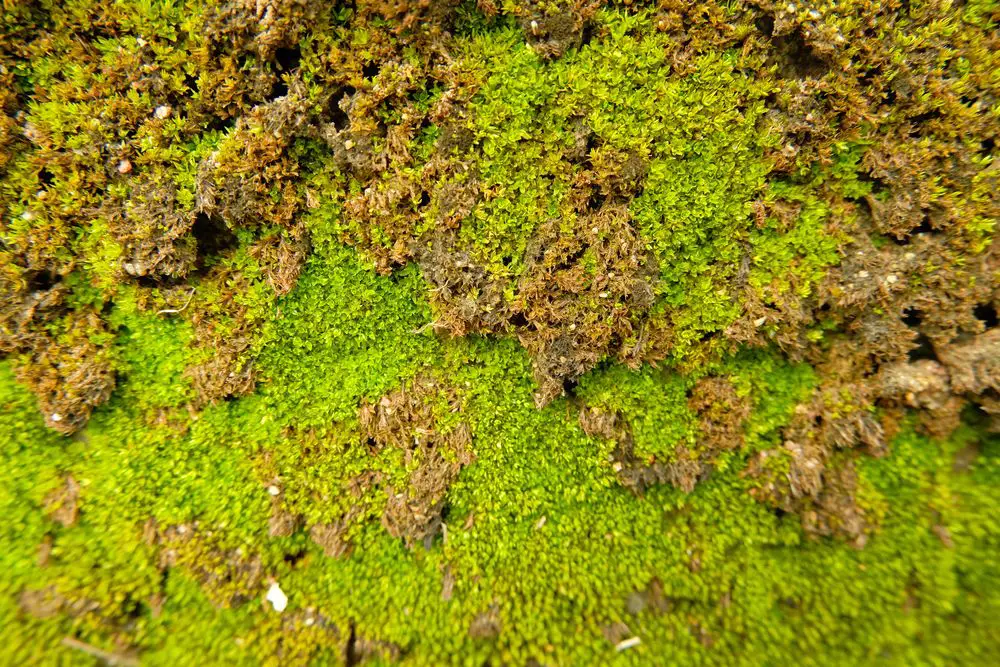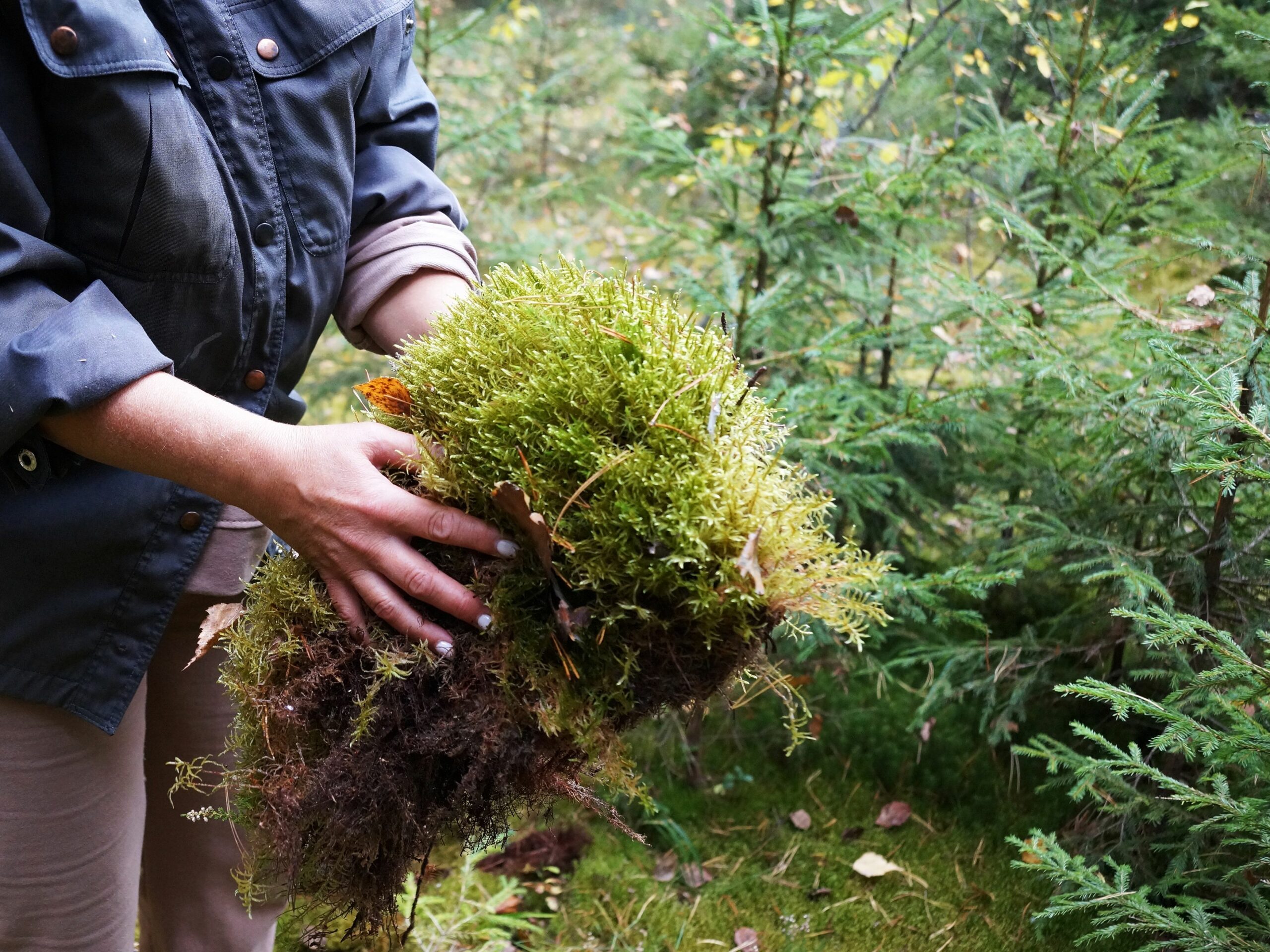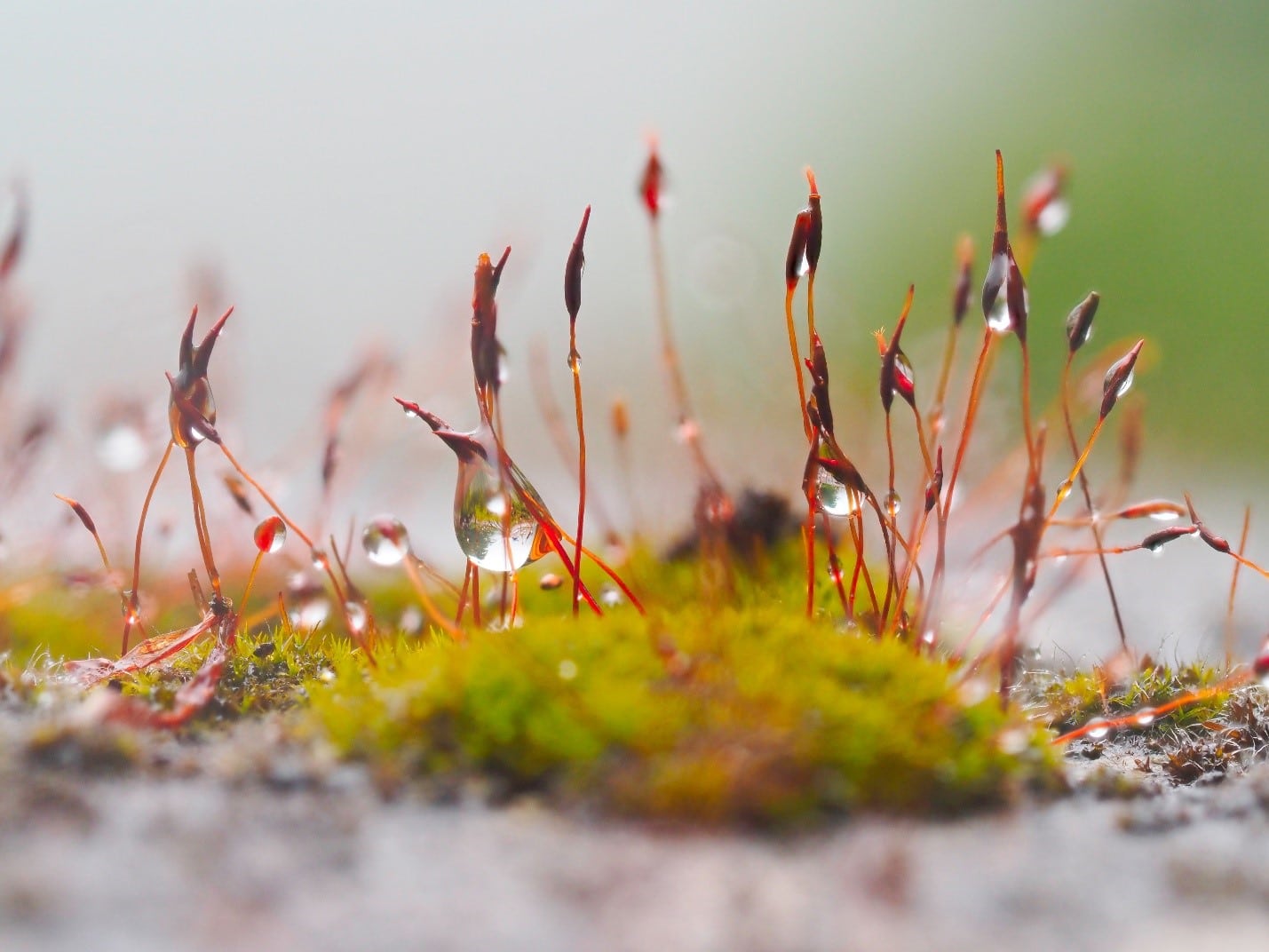Do you get curious about sphagnum moss and what are its practical uses? Well, to answer that question, sphagnum moss has been in the arsenal of most plant growers for quite a long time.
They are highly sustainable and capable of conditioning soils for growing plants.
What is Sphagnum Moss and Sphagnum Peat Moss?
Moss is a type of plant used as a soil amendment. Grown in the wetlands of Canada, Michigan, Ireland, and Scotland. This plant has roughly 350 species. Popular among growers because it’s lightweight and inexpensive.
There Are Two Kinds of Sphagnum Moss, The Sphagnum Peat Moss, And the Sphagnum Moss.

They both come from the same source: the sphagnum moss, but these two are different, and we discuss them in this article.
This discourse also examines the nature of sphagnum moss and for how long you should soak it.
Besides that, we also debate on the two different types of sphagnum moss and its application in actual farming.
You might be wondering how it happened that a plant became the soil amendment material instead of being grown in the soil.
This is because sphagnum moss can keep the moisture needed by the roots of the plant.
They became available in the mid-1900s, and since then it made a tremendous change in the farming industry.
Again, sphagnum moss is good about soil retention and can remarkably hold on to the nutrients that the growing plants need.
They are to be differentiated from compost that gardeners make in their backyard.
The sphagnum moss is generally made up of Moss with a slower decomposition rate because it happens without oxygen.
Furthermore, the process of sphagnum moss takes a lot of time to form. To give a rough estimate, they could take several millennia to form, and peat bogs gain less than a millimeter in depth per year.
This tedious and protracted process suggests that sphagnum moss should not belong in the class of renewable resources.
Gardeners often use sphagnum moss as a soil amendment, usually in potting soil.
However, this material has an acidic pH, so it is quite ideal for acid-loving plants like blueberries and camellias.
But it is not ideal for alkaline-loving plants, and for that matter, it is beneficial to use compost.
Another feature of sphagnum moss is that they never break down easily and they could last for long years once applied to the soil.
They do not hold harmful microorganisms and weed seeds that are commonly found in poorly processed compost. This makes them ideal for soil amendment, especially for starting seeds.
Nevertheless, sphagnum moss – unlike other materials, is not something that can stand alone when used for growing plants, except orchids.
You should mix them with other ingredients, mainly soil. You don’t need to worry about the efficacy of sphagnum moss, for they can keep the necessary moisture and nutrients, which might get rinsed off in an ordinary growing medium while watering.
How Long Should You Soak Sphagnum Moss?
The Method of Soaking Sphagnum Moss Depends on Where You Apply It:
The recommended period to soak your sphagnum moss is nothing less than 30 minutes – but preferably overnight.
This method of soaking the sphagnum moss helps the Moss absorb water after being dryly stored in a plastic sack.
Suppose that you are already soaking the sphagnum moss, whether for about the suggested 30 minutes or overnight. After soaking, squeeze the excess water on the Moss but do not dry them.
After squeezing out the excess water, leave them slightly wet because soaking them is enormously beneficial in helping them recover from being stored in a dehydrated atmosphere for an extended length of time.
Remember that after soaking it and having mixed it with your growing medium, if you do leave excess water on the Moss, there is a high tendency of root rot due to overwatering.
You don’t need to worry that it might dry out when you squeeze the excess water into the Moss. Remember, you will have cause to water them once applied occasionally.
Moreover, in terms of watering the sphagnum moss, it depends on the size of your container. But the general idea when watering sphagnum moss should not reach the point of overwatering.
Remember that they can hold a good amount of water; hence you should only water them occasionally depending on the climate.
The best technique for knowing when to water them is to examine under the bottom of the pot to notice if it’s still wet.
If the prevailing temperature is high, then the sphagnum moss’s moisture will evaporate more quickly than in places of a lower temperature.
Typically, you can water the growing medium mixed with sphagnum moss for about two weeks after planting. If the sphagnum moss still holds enough moisture after two weeks, then you can adjust the amount of water to put or wait until the next following week.
The target is to keep them moist and not soak them with too much water.
The Difference between Sphagnum Moss and Sphagnum Peat Moss?
Here’s how to differentiate between the two kinds of sphagnum moss: sphagnum peat moss and sphagnum moss.
The difference is simple; sphagnum moss is the living plant that grows on top of the bog in wetland places. Whereas, sphagnum peat moss, is the dead and decayed plant – commonly found beneath the sphagnum marshes.
Since the sphagnum peat moss grows beneath the natural bogs for thousands of years, they are no longer pure sphagnum moss. The peat moss already contains other organic components from other plants, animals, and insects.
When harvesting, the sphagnum moss is taken from the excess bogs, and drained. While the peat moss underneath is taken and sterilized.
The sphagnum peat moss has a light brown color with a fine dry texture. They are stored in a plastic bag and sent to different distributors waiting for growers to buy them.
On the other hand, sphagnum moss has three shades: green, grey, or brown. They are usually found in garden centers and commercially sold in smaller bags compared to sphagnum peat moss.
It is recommended to use sphagnum peat moss for soil modification because they are less expensive and stored in bigger bags. Sphagnum peat moss is a good soil amender because of its decayed matter.
You can mix it with sandy soil to retain moisture and clay soil to loosen it, allowing it to drain effectively.
In terms of pH level, sphagnum peat moss has a very acidic pH level, while sphagnum moss has a neutral pH level.
Hence, when choosing which material to use, always think of the type of plants you want to grow.
If you plant to grow acid-loving plants, go for sphagnum peat moss, but go for sphagnum moss if you plan to grow a different plant type.
How to Use Sphagnum Moss
Sphagnum moss has many practical uses, both for gardening and crafting purposes. They can be applied as moss ball planters, seed starting mediums, soil amenders, lining baskets, or other artistic pursuits. Also, use live sphagnum moss in terrariums.

Yet, remember, sphagnum moss is popular in gardening because of its remarkable feature that can hold enough moisture and nutrients. It’s clear to see why it’s rampant in the farming industry, both commercial and backyard farming.
Soilless Potting Medium
Although sphagnum moss cannot stand alone as a growing medium without mixing it with soil, there is an exception to this.
Most Orchid and succulent growers use sphagnum moss as a growing medium. This is because orchids and succulents are capable of growing without soil.
Therefore, the sphagnum moss as a growing medium for orchids and succulents makes it an ideal place due to its moisture and nutrient retention.
Also, sphagnum moss is lightweight, unlike soil, and using it as a growing medium is really efficient.
Liner or Form Builder
Sphagnum moss’s soft and malleable ability makes it a versatile material for farming and crafting purposes.
You can use it to form a lining for hanging baskets or to hold shapes when making orchids or succulent wreaths.
You can take a small portion of the sphagnum moss and work your way to design it into a line.
Final Thoughts on Sphagnum Moss and Sphagnum Peat Moss
Sphagnum moss, in general, is known to be sustainable and efficient in the farming industry. Remember the different natures of sphagnum moss and sphagnum peat moss to prevent farming mistakes.
Aside from that, when buying sphagnum moss or sphagnum peat moss, always go to a reputable supplier and ask relevant questions about it. This will help you pick which type of Moss is for you.
When soaking the Moss, may it be sphagnum moss or sphagnum peat moss, always squeeze out the excess water. Don’t worry about them being dry because you can always apply water when it is needed.
Keep all these essential points in mind when you plan to include sphagnum moss in your arsenal. You will have a significant advantage when you have such a wide knowledge of the things you work with.
Sphagnum Moss Is Great for Orchids
Reasons why Sphagnum Moss is good for Potting Orchids
We know that Sphagnum Moss is great for Orchids, in fact it’s essential as a potting medium when repotting your Orchid.
There are many varieties of Orchids and Sphagnum Moss can be used quite successfully on every type.
Because it allows oxygen to circulate freely at the roots of the Orchid, and because it has enormous moisture absorbing qualities for the Orchid causing good irrigation slowing down the decomposition cause by microorganisms.
These few facets alone encourage a healthier life.
Did you know that Sphagnum Moss is a very small plant and is produced in a variety of colours – pink, green and red?
It flourishes well on the smallest amount of soil, which hasn’t been enriched or received any extra nutrients. This is one of the reasons why is does so well in terrariums and other places that have low grade soil.
Sphagnum Moss is not a parasitic plant – so if you find Moss under a dead tree, chances are that the Moss didn’t kill the tree.
It’s possible that because there are a few nutrients in the bark of the dead tree the Moss attaches itself to the bark.
It’s said that the best qualities of the Moss are its water retaining capacities. Water easily spreads itself from one end of a planted area to the other.
This is done with great speed as the sphagnum moss can retain water up to 20 times its normal dry weight.
Why Sphagnum Moss Is Important to Your Orchid
Moss slowly releases the water and produces a natural watering ecosystem that generates humidity and nutrition.
Because the internal structure of sphagnum moss it’s so porous that water can circulate through the Moss and hydrate the whole extension.
Re-potting with Sphagnum Moss
When re-potting, you need to soak your Moss in water for between 30 minutes and overnight. After it has soaked for long enough, squeeze out the Moss so it’s no longer dripping with water.
We do this as the Moss must first absorb water in order to retain water. This first soaking help to fluff up the strands. However, because you don’t want excess water, you squeeze it to avoid root rot.
Now wrap the strands or sphagnum lightly around each root. Don’t wrap tightly – it should be very loose and also well-spaced out, thus enabling lots of air to circulate and space for roots to grow.
Take a large piece of Moss and rotate it with your hands to make a ball. Put the ball under the center of the Orchid.
Gently position the Orchid in the pot and carefully push the Moss for the Orchid between the roots and the sides of the pot, making sure there’s easily enough room so as not to suffocate the Orchid.
Good Quality Sphagnum Moss
The different qualities of Moss are referred to as grades. The grading differs. In some areas it’s given star grading – as in 5 stars. Whereas in other areas it’s given letter grading as in AAA.
Its absorption qualities are higher, and therefore the Moss is superior when it’s long, thick, and dense. Further, the longer and thicker the strand makes it easier to wrap round each orchid root, and it will absorb more water.
We know that some rookie orchid growers pack way too much Sphagnum Moss into their pots but too much will strangle the Orchid and actually not give it the water it requires.
Using Sphagnum Moss as a Medium
There is a good argument to use Moss as a medium – particularly in the case for Orchids that a sickly and need extra care. In such matters this Moss is text book flawless.
Ensure you don’t pack the Moss too compactly in the pot or you’ll get the opposite of correct air circulation and better water absorption will become a myth.
How Long Does Sphagnum Moss Last?
This completely depends on the quality of Moss you buy in the first place.
It can last anywhere from six months up to five years. If you chose a high quality ‘sphagnum, you’ll probably need to re-pot between two to five years. However, a lower quality Moss will probably degrade inside six months.
It makes all the sense in the world that, if you can, then always use the best quality moss.
We can tell you that it’s better not to handle the Orchids too often. Try not to touch them. They are happier and heathier when not fussed over.
The Reuse of Sphagnum Moss
Don’t reuse the Moss – it’s not a good idea.
There is a difference between Moss that’s sold by Garden Centers and Moss that’s used in Aquariums.
Sphagnum moss sold buy garden centers and supermarkets just isn’t the same as those used in aquariums.
Re-potting means destroy the decomposed Moss and replace it with new top grade Moss so everything can continue to function properly and your Orchids will remain healthy.
Why Do Some Orchid Fans Hate Sphagnum Moss?
It’s necessary to be very careful when using the Moss and you must follow all the rules.
We understand that there are some people that ‘try the Moss’ but don’t comply with the rules. The main problem there being root rot because these folks love to over water their plants. Thus, amongst such people Moss has gained a bad rap.
Orchids simply want to be left alone. Too much fussing and their condition starts to deteriorate. Thus, over watering makes things much worse.
One problem you need to watch out for is Sphagnum’s low pH so there’s a leakage of acidity into the medium.
Sphagnum is neutral when bought but can become toxic (over time). As a result of the acidity, it’s important that you check regularly and thoroughly flush out your potting medium about once a month. Flushing out is also good to cut the salt retention.
A salt build-up can happen on the top of the medium. Further, it can worsen as a result of any water you use that isn’t distilled, or rain water.
Once per month you need to rinse out thoroughly the medium and be cautious not to compact the Moss whilst rinsing.
What’s The Difference Between Peat Moss and Sphagnum Moss?
Sphagnum Moss is alive when harvested. It is then dried out, packed and sold.
Sphagnum Peat Moss is made up of old dead plants, twigs, leaves, etc. This dead mix is made into a compacted wad of Moss. More wads are made and compacted together and the multi layering becomes compacted peat moss.
It may be no surprise for you to learn that Sphagnum Moss is greatly preferred over Sphagnum Peat Moss.
Out of the approximately 300 species of different type of Mosses, for quality Sphagnum is the most preferred.
Final Thoughts on Peat Moss and Sphagnum Moss
Sphagnum Moss therefore is the most popular Moss and the best functioning Moss.
To get the best results however, please read the instructions before using the Moss!
Jenny Marie
Tribal Writer
Edited by
Patricia Godwin

